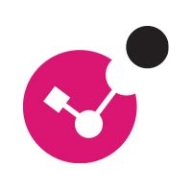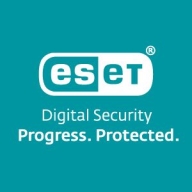

ESET Endpoint Protection Platform and Check Point Harmony Endpoint are key competitors in the endpoint security market. ESET is distinguished for its simplicity and efficient protection, whereas Check Point Harmony offers advanced security features despite its complexity and resource demands, suggesting an edge in organizations needing comprehensive security measures.
Features: ESET Endpoint Protection provides comprehensive threat protection with a lightweight and resource-efficient profile, featuring ThreatSense technology and host-based intrusion prevention. It also offers comprehensive management via the ERA Web Console. Check Point Harmony Endpoint is notable for its advanced threat prevention capabilities, including extended detection and response (XDR), threat emulation, and sandboxing, making it suitable for tackling sophisticated threats.
Room for Improvement: ESET needs enhancements in heuristic and AI-driven threat detection and improved integration with cloud management. It also faces challenges with advanced threat detection. Check Point Harmony Endpoint's resource-heavy operation and complex policy management are prominent issues. Its performance on older systems needs improvement, and streamlining log retention along with user interface enhancements are suggested.
Ease of Deployment and Customer Service: ESET is praised for its ease of deployment, supporting both on-premises and hybrid cloud environments, and offers reliable technical support. Check Point Harmony Endpoint, while flexible across different environments including public cloud configurations, may require additional expertise due to its complex policy configurations. Both solutions receive generally positive customer support feedback, with ESET slightly more favored for responsiveness.
Pricing and ROI: ESET is considered cost-effective for small and medium-sized businesses, providing good value for money without demanding significant resources. Check Point Harmony Endpoint, though priced higher, justifies its cost through extensive features and advanced capabilities, reflecting a premium choice. Both solutions demonstrate a positive ROI, with ESET noted for its lightweight system requirements, mitigating the need for additional resources.
Initially, we spent two to three days on the investigation process, but now we are able to investigate alerts in only half a day, which has really boosted our performance and shown a return on investment.
Now, the system automatically detects and isolates endpoints within minutes.
The product is affordable and provides excellent coverage and protection across multiple platforms.
I saw the return on investment with ESET Endpoint Protection Platform within months.
The customer support for Check Point Harmony Endpoint deserves a rating of 10.
We use premium support, and it is beneficial as 24/7 support is available.
I have opened several cases and they were handled very efficiently and quickly.
They have great technical support.
Normally, I cannot give a ten for support of all brands, as it is not always possible to get full support from companies.
We initially purchased only 100 licenses and as we grew, we acquired many more licenses without encountering any issues.
The single agent works for multiple operating systems and endpoint types, providing elastic growth and reducing the overall number of components.
Proactive features help guard against data breaches and vulnerabilities.
In terms of scalability, I can rate it eight or nine out of ten.
Their support is phenomenal, offering quick assistance.
Minimal system performance impact is very important when choosing endpoint protection solutions, and I believe ESET uses minimum hardware of the PC.
Check Point Harmony Endpoint is very stable in our experience, with few crashes or disruptions in daily use.
The stability of the tool is high, as I have not experienced any downtime.
Occasionally, there are some backend issues where the tenant is down, but apart from that, Check Point Harmony Endpoint is stable and working effectively.
In terms of stability, I can rate it at nine out of ten.
Our experience with ESET Endpoint Protection Platform's centralized management console is mostly fine for managing security policies across endpoints.
Principally regarding the system performance, Check Point Harmony Endpoint impacts us significantly, and addressing this issue would make a substantial difference.
Extending that window would help security teams conduct deeper forensic investigations and meet compliance requirements more easily.
Building a threat simulation tool and adding native capabilities to simulate phishing, malware, or ransomware scenarios will help teams validate protection and train users without relying on third-party tools.
A lightweight version of ESET might be beneficial as many of our clients have older CPUs and RAM.
When we were using CrowdStrike, it used to detect and block pirated software, but ESET Endpoint Protection Platform is not doing that.
Extensive APIs to easily integrate our own systems with the platform for user configuration via their company portal.
It is not expensive and provides comprehensive coverage.
While the prices are higher than those of other solutions, the features justify the investment for customers.
Pricing is a bit expensive but justified by the product’s features, capabilities, and scalability.
The pricing of ESET Endpoint Protection Platform is a bit high compared to other competitors.
I would rate ESET Endpoint Protection Platform a five for pricing on a scale from 1 to 10, where 1 is cheap and 10 is expensive.
Check Point Harmony Endpoint protects our company by warning us against clicking any malicious links and prevents our hosts from becoming vulnerable to cyber attacks.
This feature is valuable for our customer because it stops threats before they reach users by scanning incoming files at the network gateway.
The anti-ransomware and threat emulation features have significantly helped our organization as they prevent attackers from encrypting files during ransomware attacks, allowing the system to re-decrypt files and restore them to their original forms, effectively stopping ransomware attacks.
The best feature of ESET Endpoint Protection Platform is that I get all the details about which user is using it, how much time they spend on websites, and all related information.
Machine learning, especially through live detection, detects threats that are blocked based on reputation or sandbox detection.
The most valuable feature is the cloud administration.
| Product | Market Share (%) |
|---|---|
| Check Point Harmony Endpoint | 2.3% |
| ESET Endpoint Protection Platform | 2.8% |
| Other | 94.9% |
| Company Size | Count |
|---|---|
| Small Business | 133 |
| Midsize Enterprise | 69 |
| Large Enterprise | 76 |
| Company Size | Count |
|---|---|
| Small Business | 68 |
| Midsize Enterprise | 18 |
| Large Enterprise | 21 |
Check Point Harmony Endpoint provides advanced threat prevention with centralized management and seamless integration, safeguarding networks through robust security features and real-time threat detection. It excels at ransomware prevention, encryption protection, and detailed threat analysis.
Check Point Harmony Endpoint is renowned for its comprehensive security features, including anti-ransomware capabilities and centralized management. It integrates seamlessly with existing systems, enhancing network protection through features like SandBlast Agent and threat emulation. Organizations benefit from significant incident reductions, utilizing its powerful threat detection, forensics, VPN capabilities, and robust encryption measures. Centralized management during remote work setups and enhanced security through URL filtering and rollback mechanisms further solidify its efficiency. Despite its high resource consumption and configuration challenges, it remains a preferred choice among enterprises aiming to enhance cybersecurity measures.
What Key Features Does Check Point Harmony Endpoint Offer?In sectors such as finance and healthcare, Check Point Harmony Endpoint is crucial for maintaining data security and regulatory compliance. Its features cater to endpoint protection requirements across industries, providing reliable solutions for encryption and cybersecurity challenges. The tool's deployment across diverse environments secures endpoint systems effectively, ensuring uninterrupted operations amid evolving threats.
ESET Endpoint Protection Platform (EPP) is a cybersecurity solution designed to protect businesses of all sizes against a wide array of cyber threats. Its advanced technologies and user-friendly interface provide robust security for endpoint devices, such as desktops, laptops, and mobile devices, without compromising performance. ESET's approach combines multiple layers of protection, including traditional signature-based detection with advanced heuristic analysis, behavioral monitoring, and machine learning, to effectively counter both known and emerging threats.
ESET's Endpoint Protection Platform is based on a multi-layered defense strategy, which utilizes various technologies like cloud-based scanning, network attack protection, and exploit blockers. This strategy ensures solid protection against malware, ransomware, phishing attacks, and advanced persistent threats (APTs), offering businesses peace of mind regarding their digital security. ESET's platform protects computers, mobile devices, file servers and virtual environments. It’s available as a standalone product and as a part of a wider enterprise cybersecurity bundle, ESET PROTECT Enterprise, which also includes file server security, disk encryption, a cloud sandbox and EDR.
ESET PROTECT Advanced
The ESET PROTECT Advanced provides best-in-class endpoint protection against ransomware & zero-day threats, backed by powerful data security.
Performance and Compatibility
ESET is widely acclaimed for its light system footprint, ensuring that endpoint protection does not come at the expense of performance. This efficiency is crucial for maintaining operational productivity without sacrificing security. Moreover, ESET's solutions are compatible with a wide range of operating systems, including Windows, macOS, Linux, and Android.
Centralized Management
ESET Endpoint Protection Platform is managed via ESET Security Management Center, a centralized management console that provides real-time visibility into on-premise and off-premise endpoints. This simplifies the administration of security policies, streamlines the detection and response processes, and provides detailed reporting capabilities, making it easier for IT professionals to maintain a secure and compliant IT environment.
We monitor all Endpoint Protection Platform (EPP) reviews to prevent fraudulent reviews and keep review quality high. We do not post reviews by company employees or direct competitors. We validate each review for authenticity via cross-reference with LinkedIn, and personal follow-up with the reviewer when necessary.